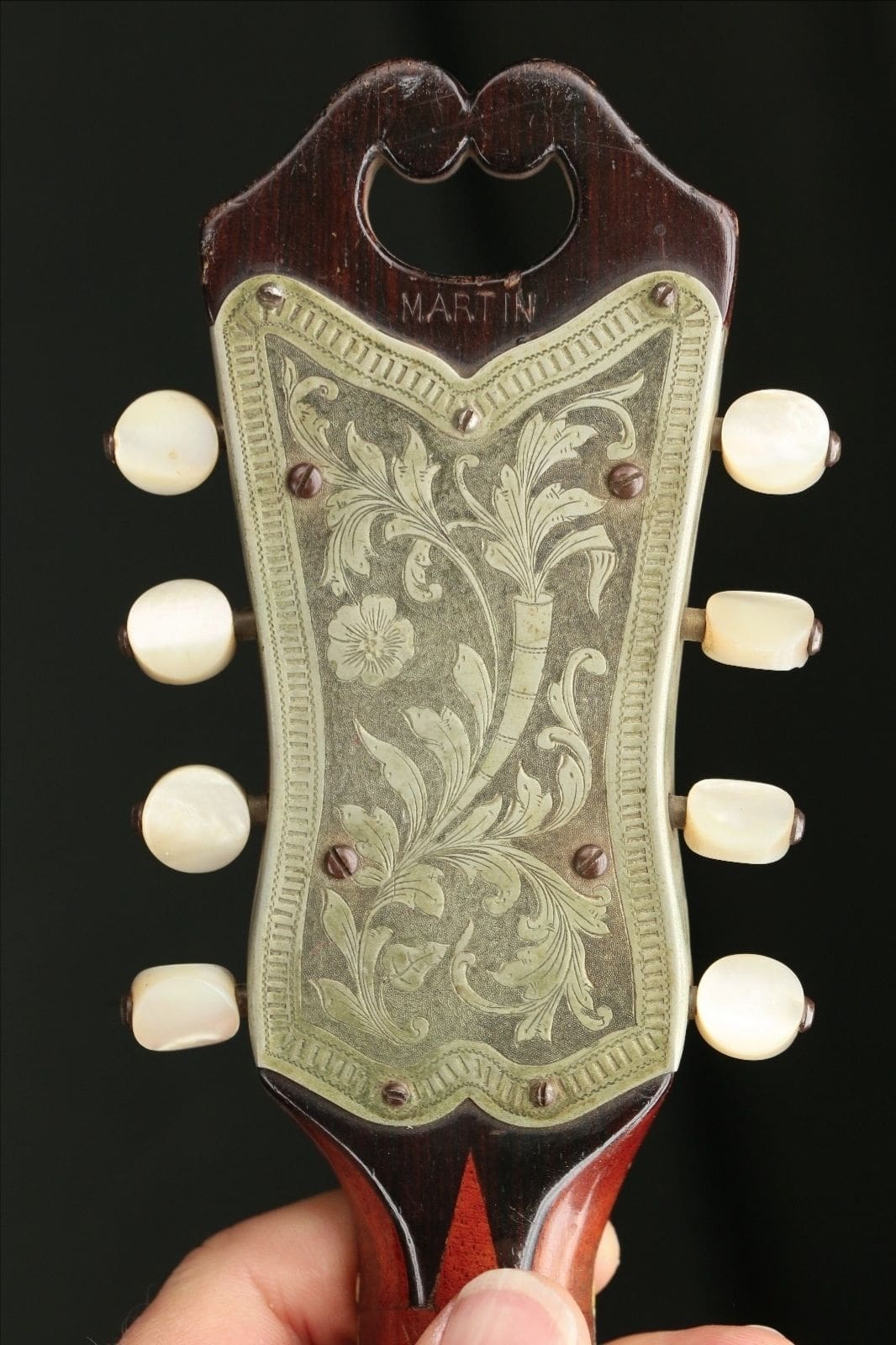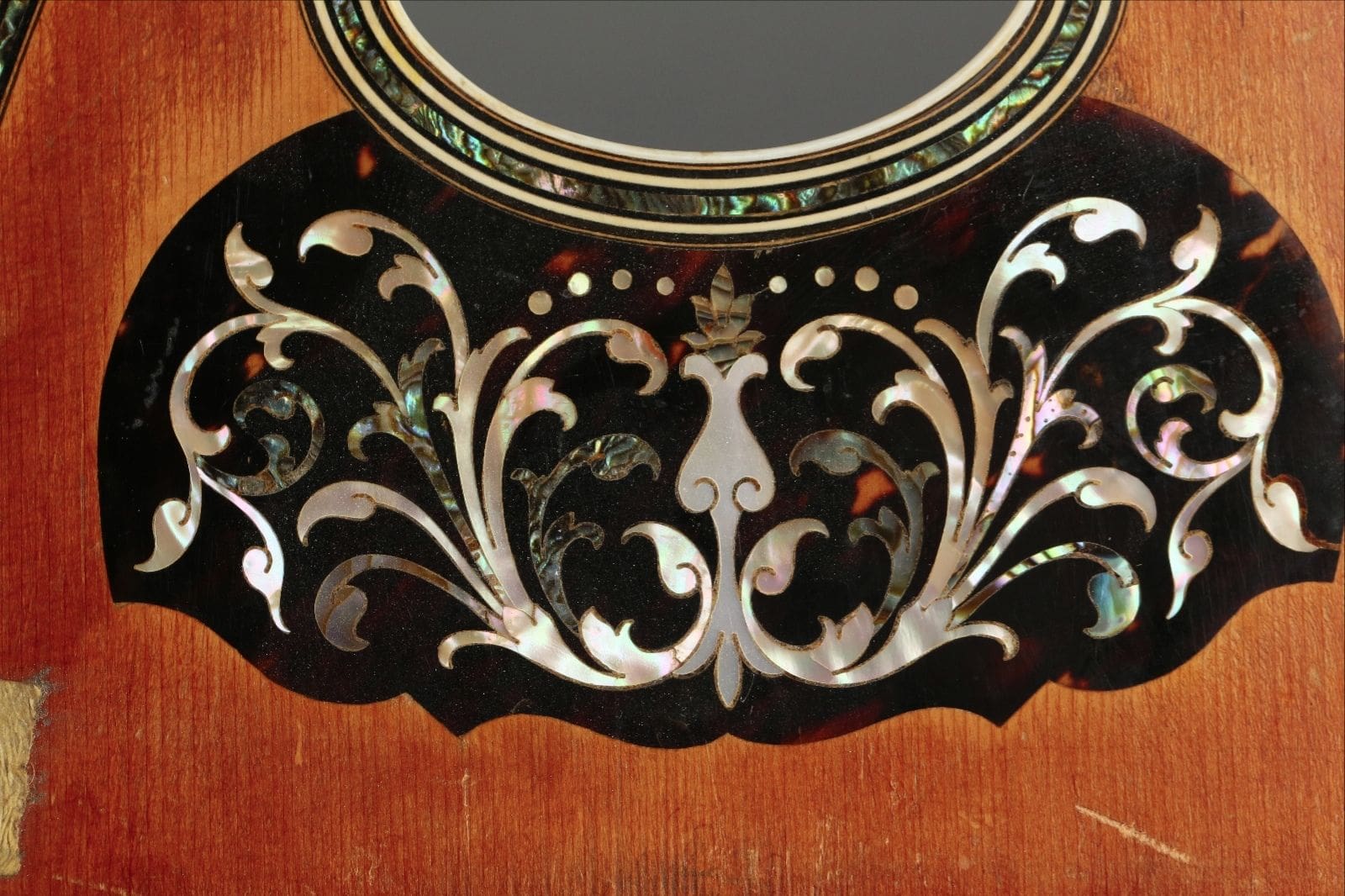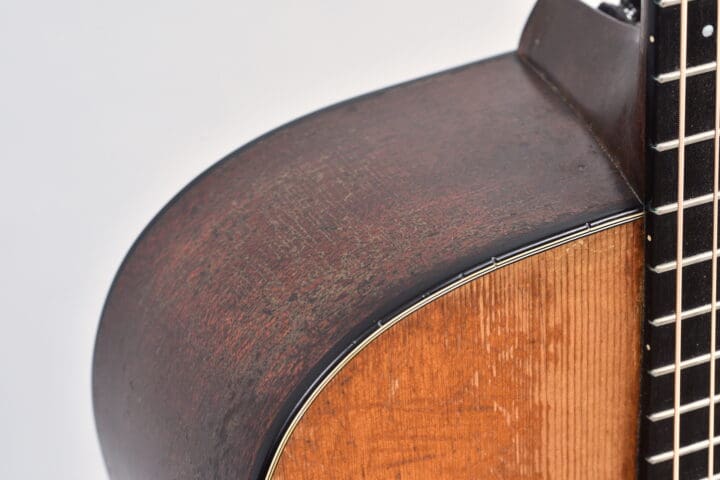From time to time, as I search for instruments for our Catch of the Day column, I run across an instrument that is in need of major work. These are usually described as project guitars, or in this case, a project mandolin. Usually they are instruments that deserve to be resurrected, but for whatever reason the person selling it can’t do the work. I thought it might be interesting to feature a few of these instruments as they turn up. Today’s Project, an 1899 Martin Style 5, is a real heartbreaker.
At first glance, it doesn’t look too bad. There appears to be some damage around the 12th fret and there’s some tape on the body but everything else looks pretty good. The original ivory bridge is gone, which is a problem. The original tailpiece cover is also gone, but that will be fairly easy to replace. It still has its original tuning machines, though, which is a big deal. Those would be almost impossible to replace. Let’s take a closer look and see what else is wrong with this mandolin.
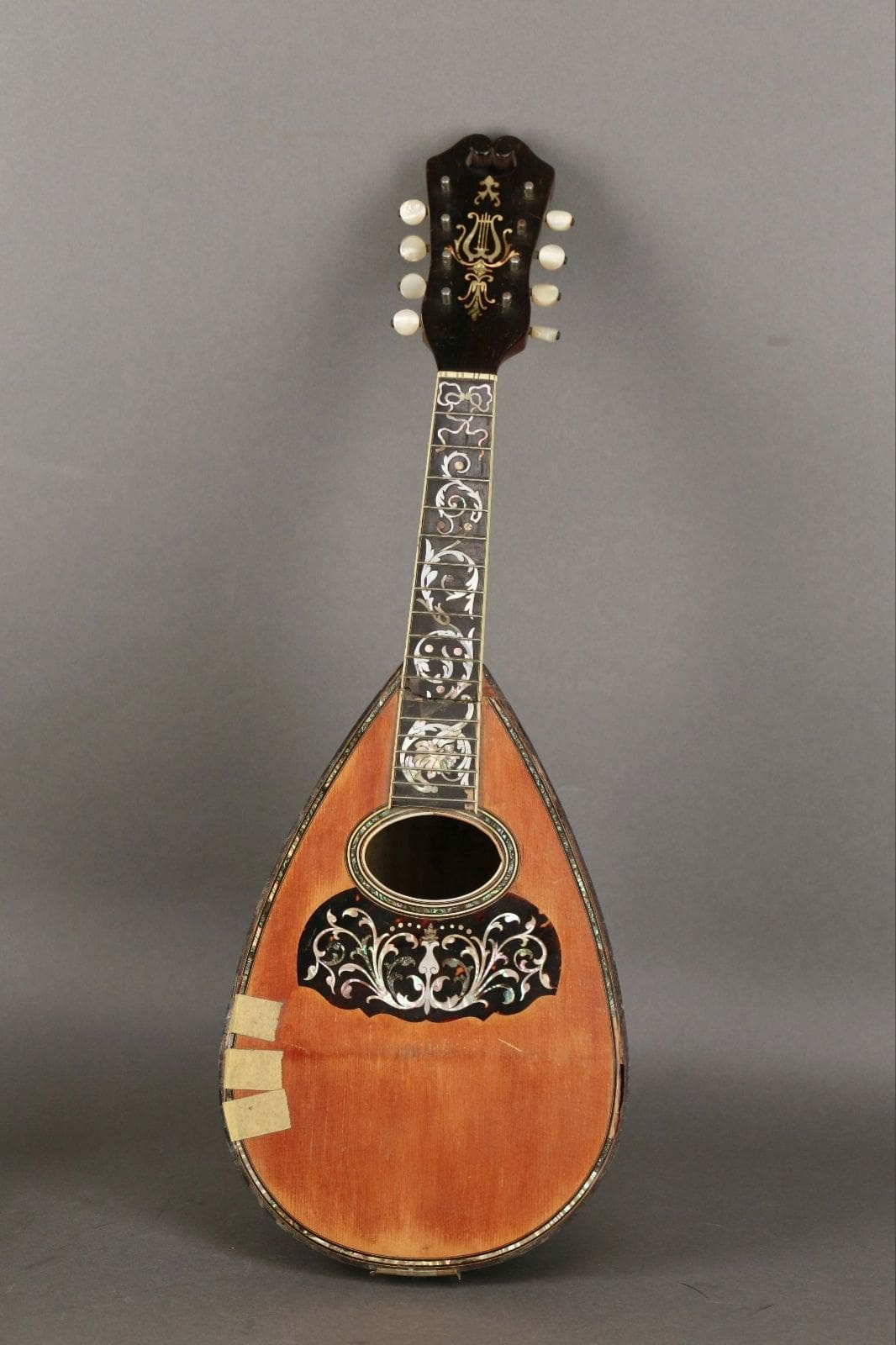
Oh. Mandolins aren’t supposed to do this. It looks like things are really, really bad.
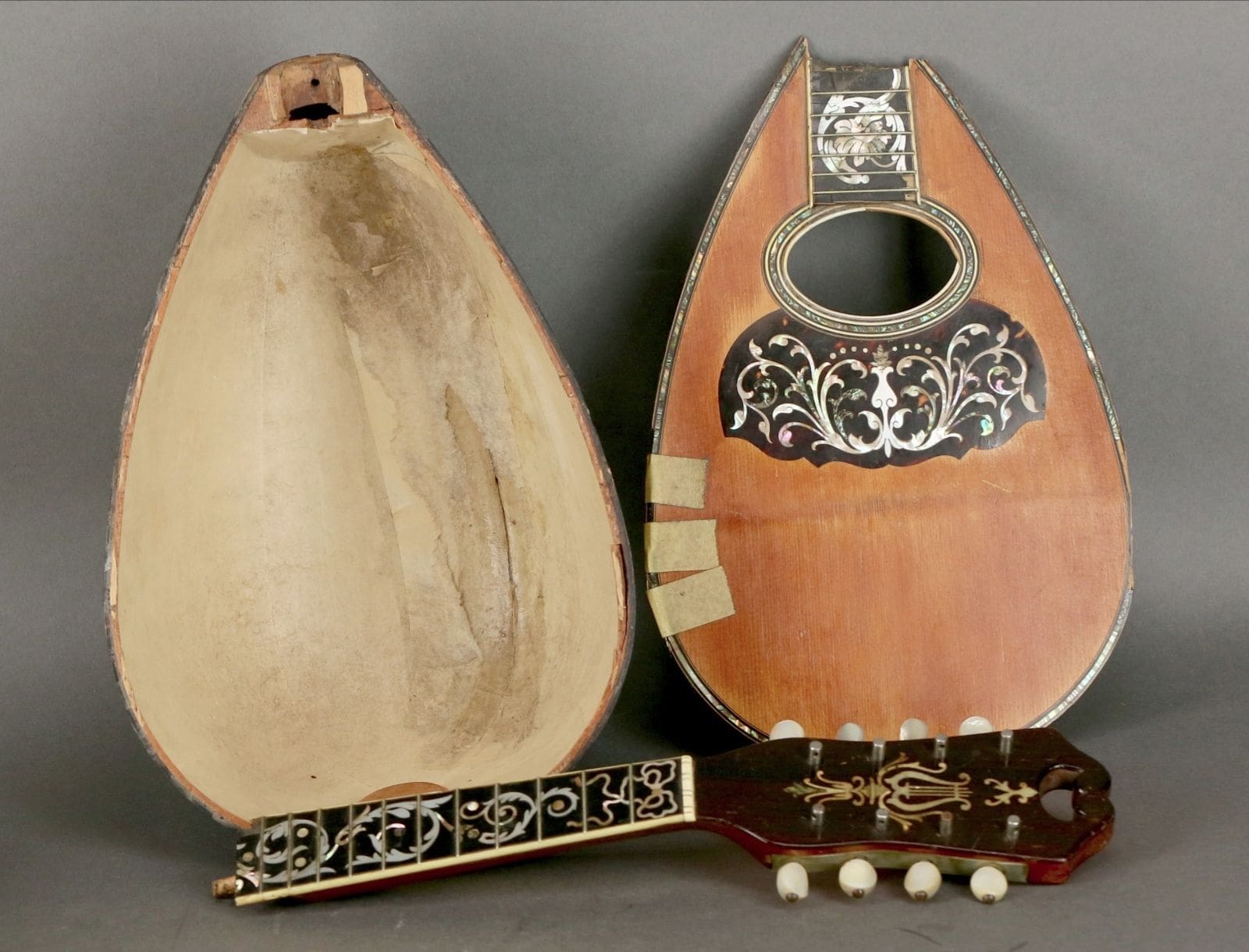
The good news is the body seems to be in pretty good condition. It looks like one of the ribs on the left has been worked on in the past, but that should be easy to clean up.
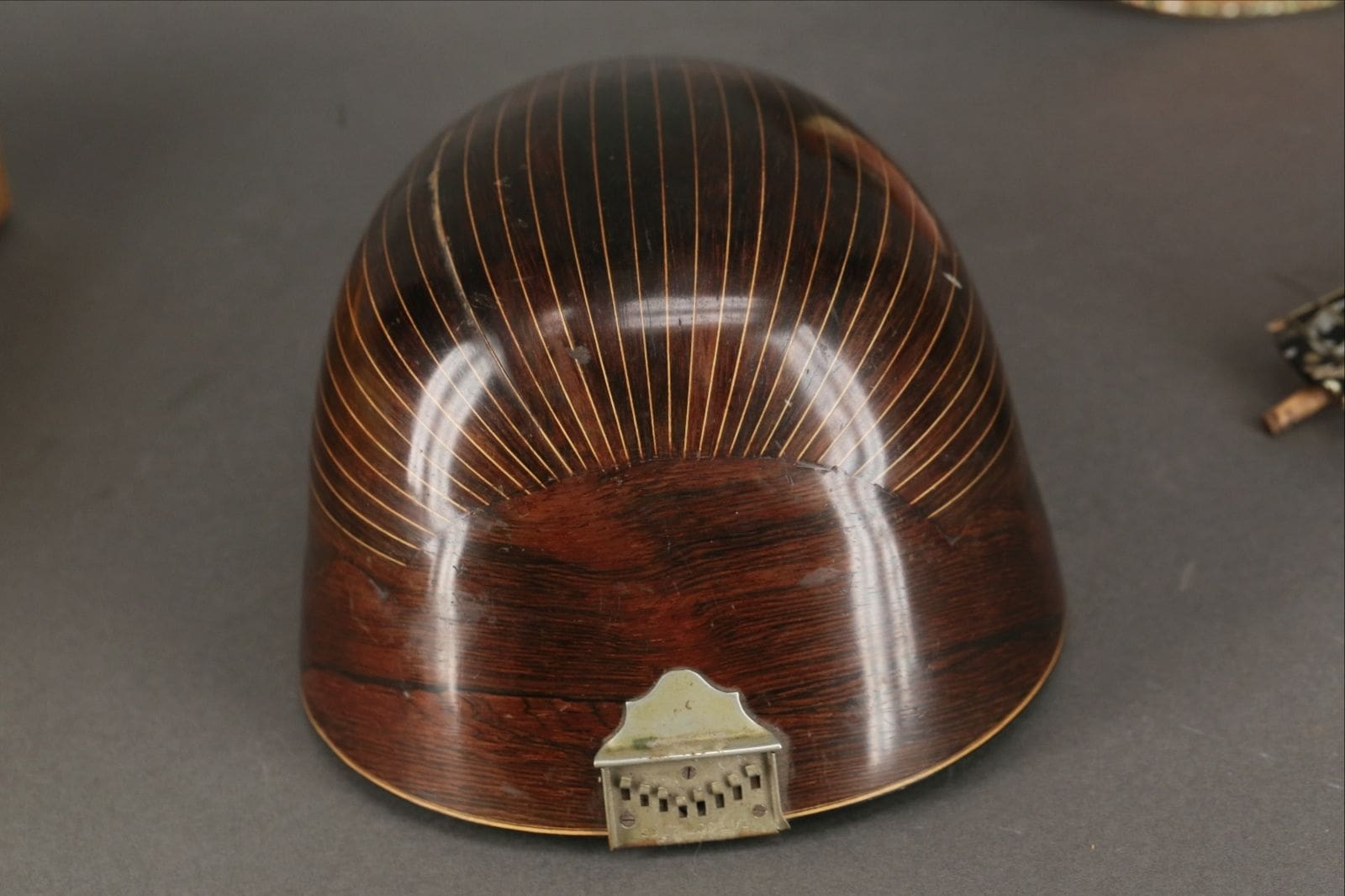
Here’s another view of the body. The ribs on this mandolin are made from Brazilian rosewood.

Here’s the crack from the inside. It’s a common but not universal technique to paper the inside of bowl-back instruments like this. You’ll also see it on some lutes, ouds and bouzoukis. To be honest, I’m not sure why builders do it.
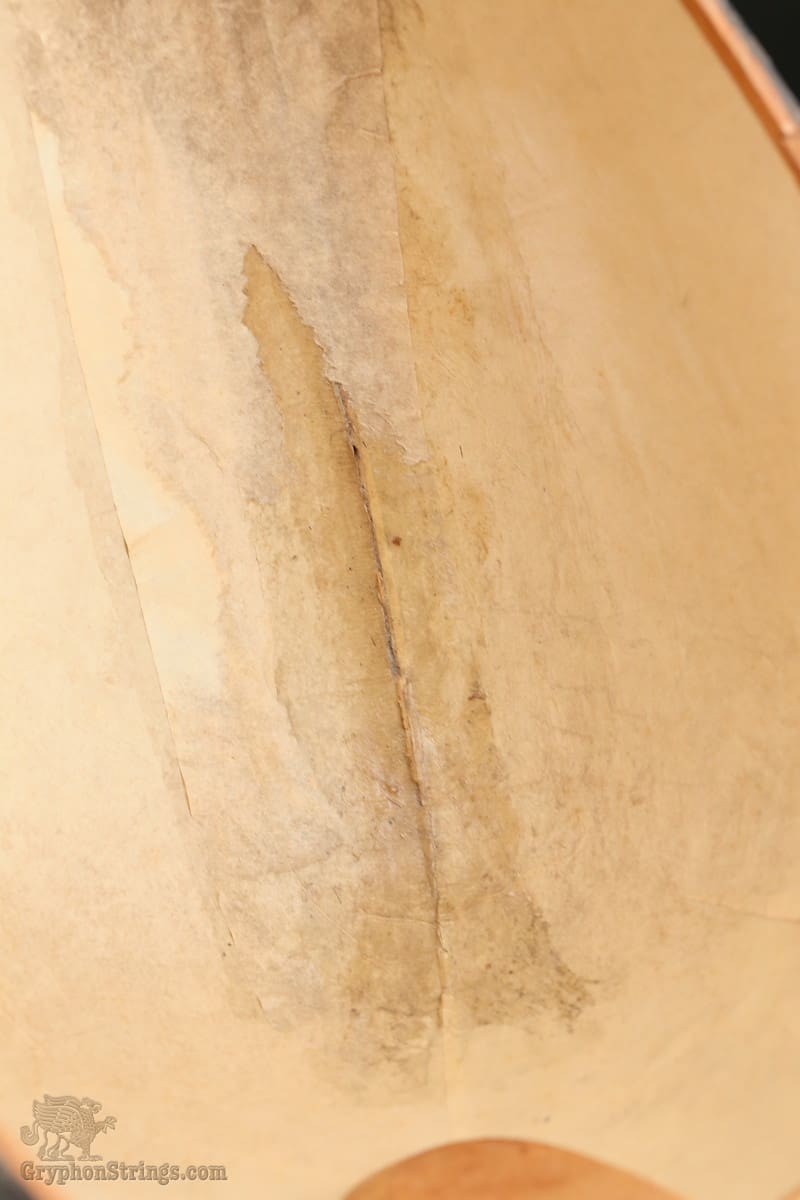
Another view of the interior, this time looking at the neck joint area. Martin used a different serial number sequence than they did with their guitars, which is why the very early mandolins have three digits. The Style 5 was introduced in 1898 and this one was made in 1899.

The top looks to be in pretty good shape. The seller says that there is some loose binding under the tape and a few of the abalone trim pieces are missing.
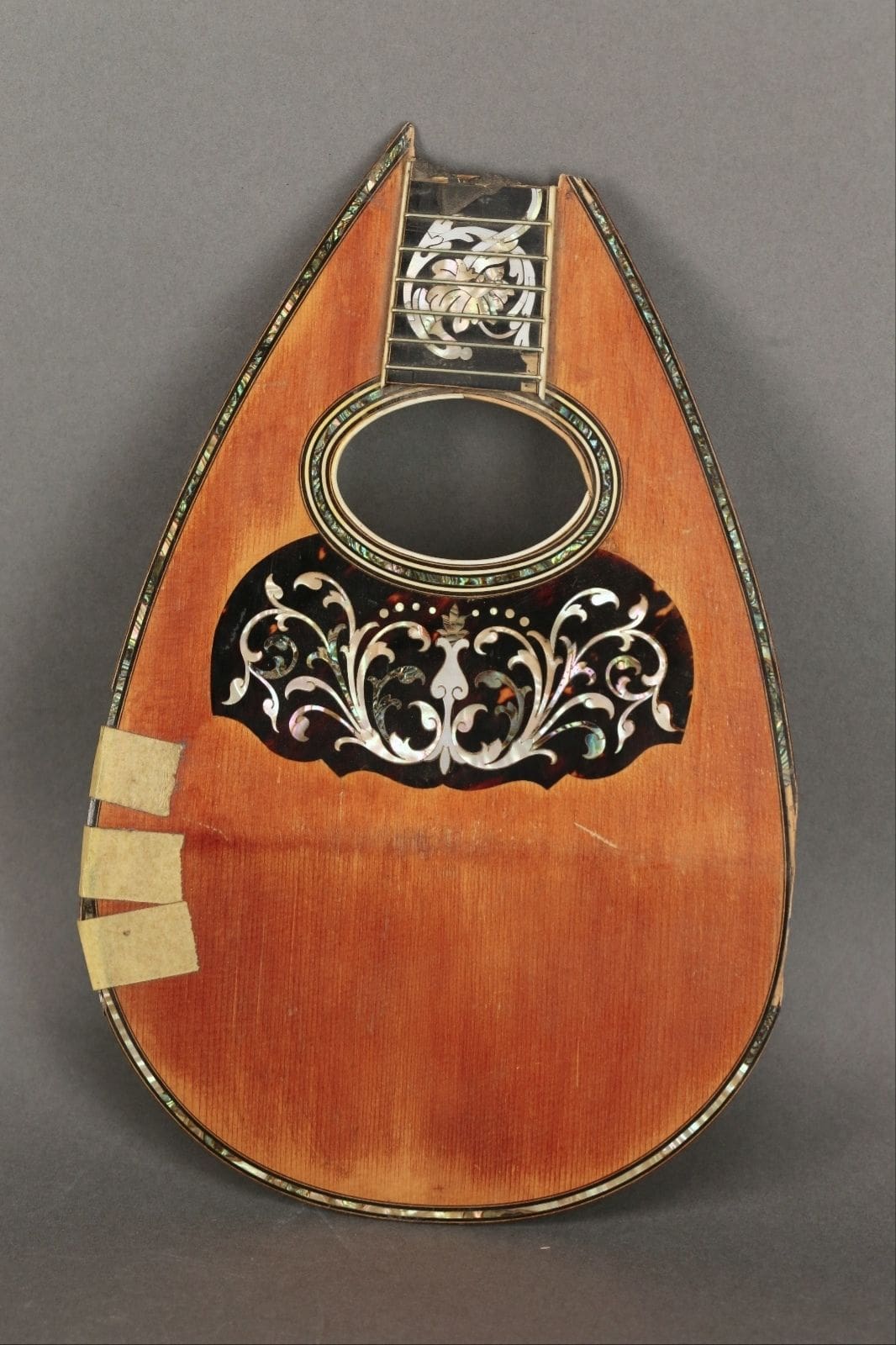
There doesn’t seem to be any cracks in the top, which is good. It also look like it was cleanly removed from the body, as well.
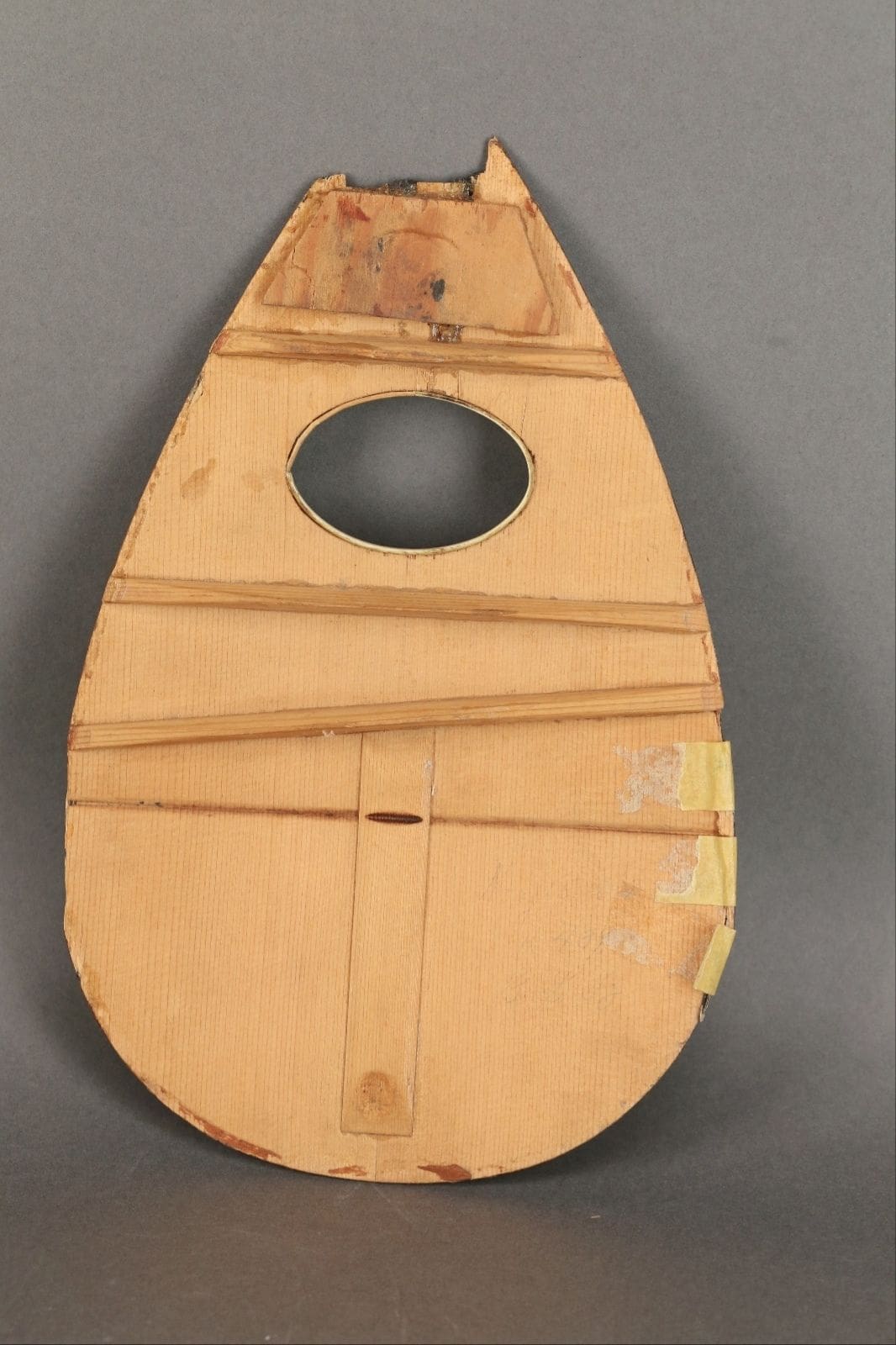
This is where things get really ugly. Not only is the fretboard broken, but part of the top is missing. I suspect the top would be possible to repair but I’m not sure the fretboard can be saved.
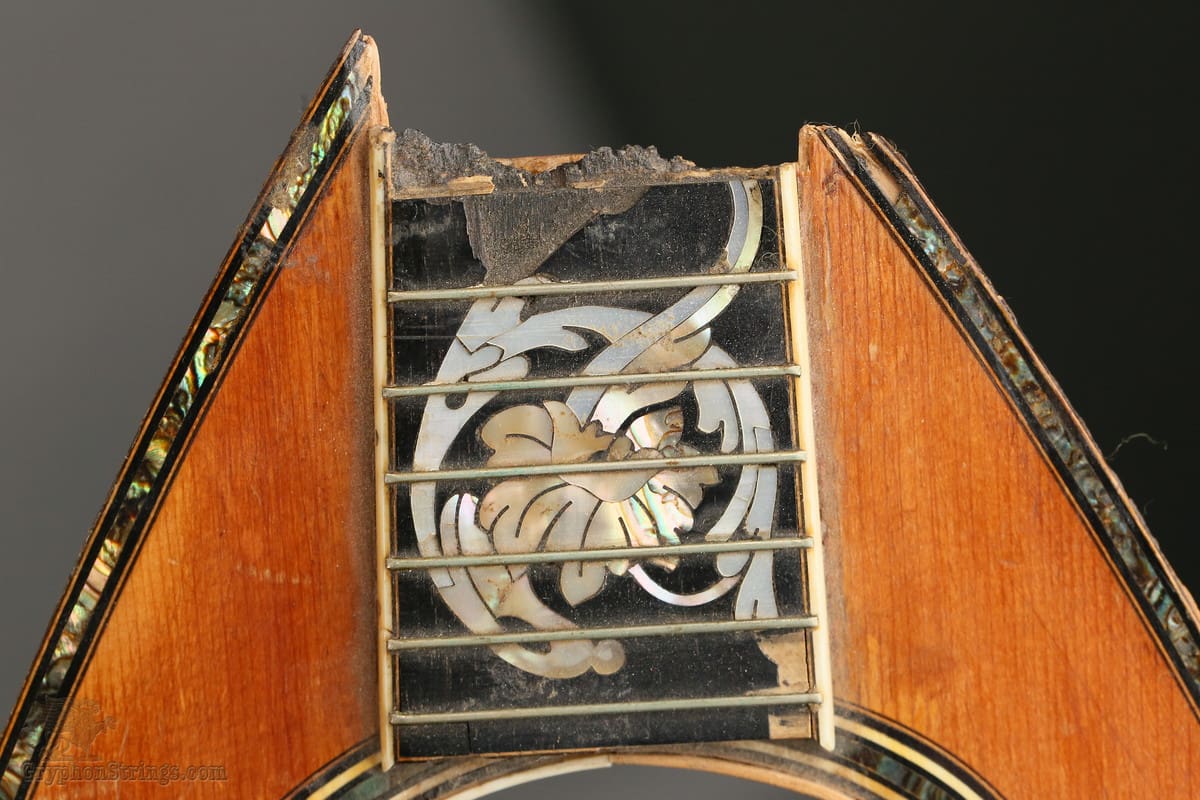
Here’s the neck joint area. It doesn’t look too bad.
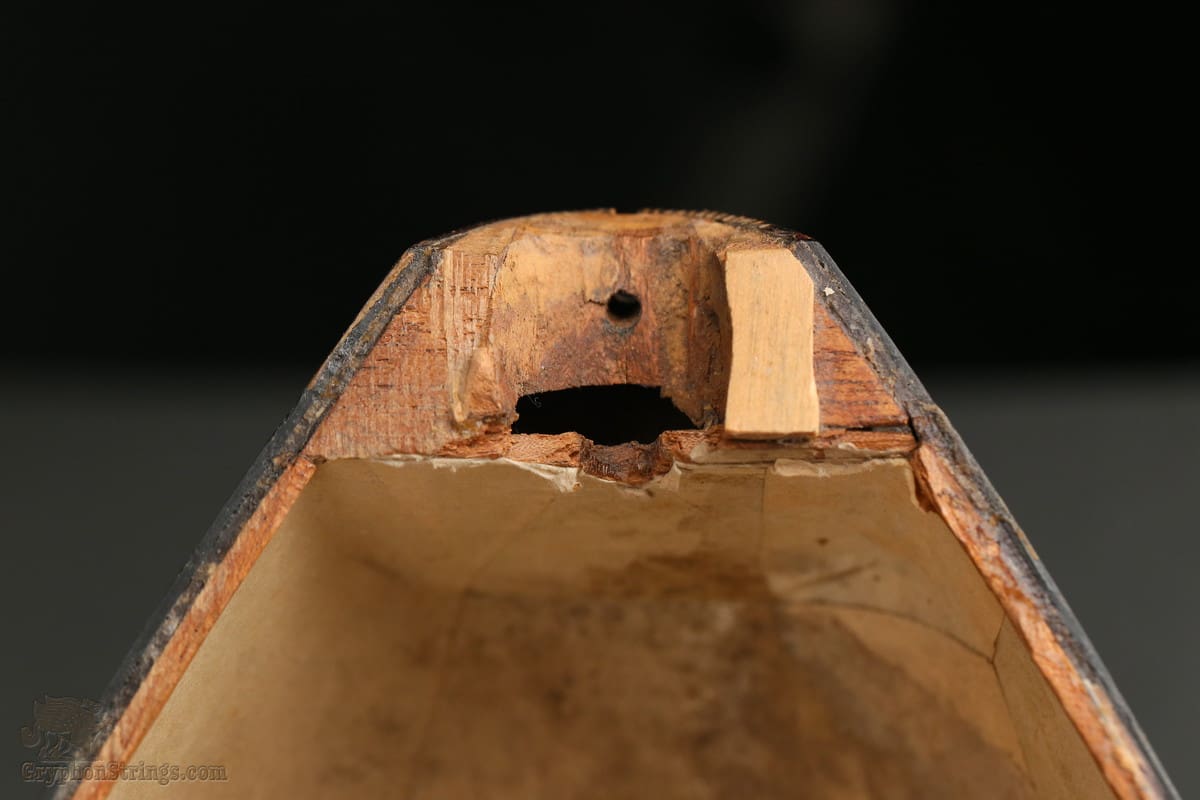
And here’s the neck joint end of the neck. Again, it doesn’t look too bad, all things considered.
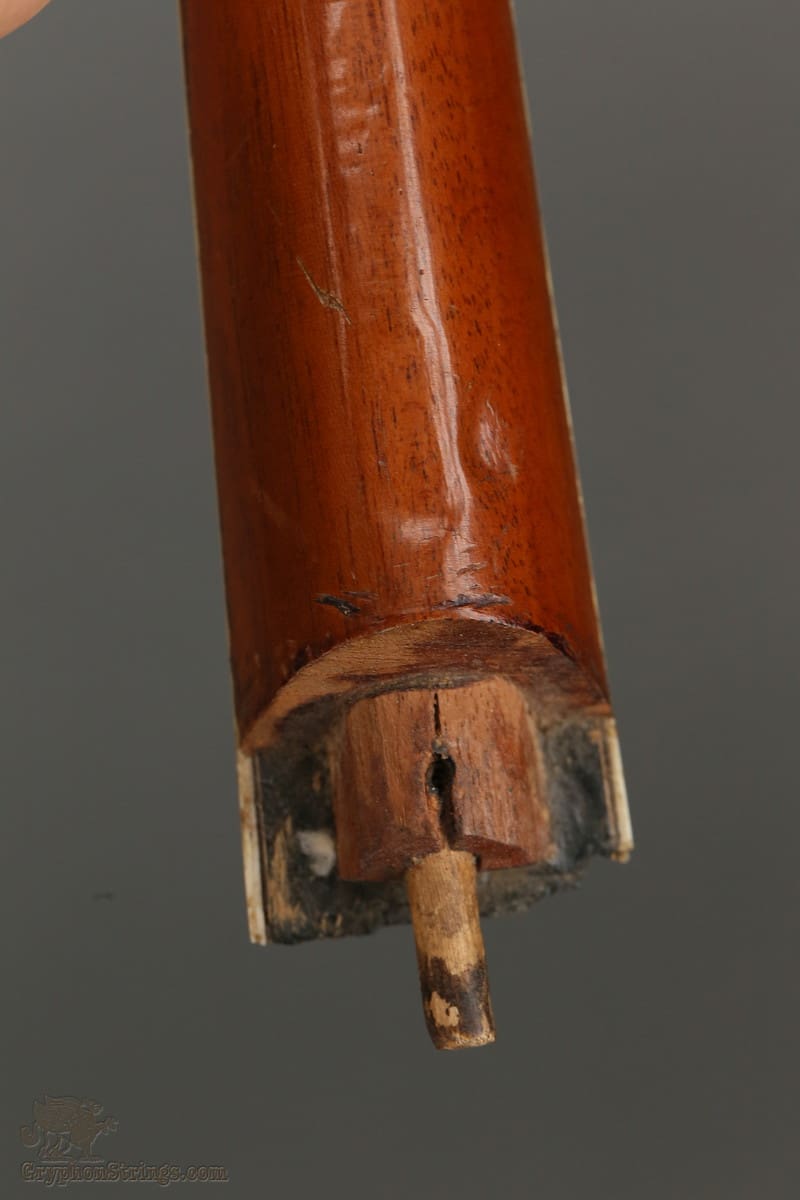
The other side of the neck, though, looks rough. I don’t know if it would be possible to salvage the inlays or would you need to cut new inlays? I suppose it depends on how thick they are.
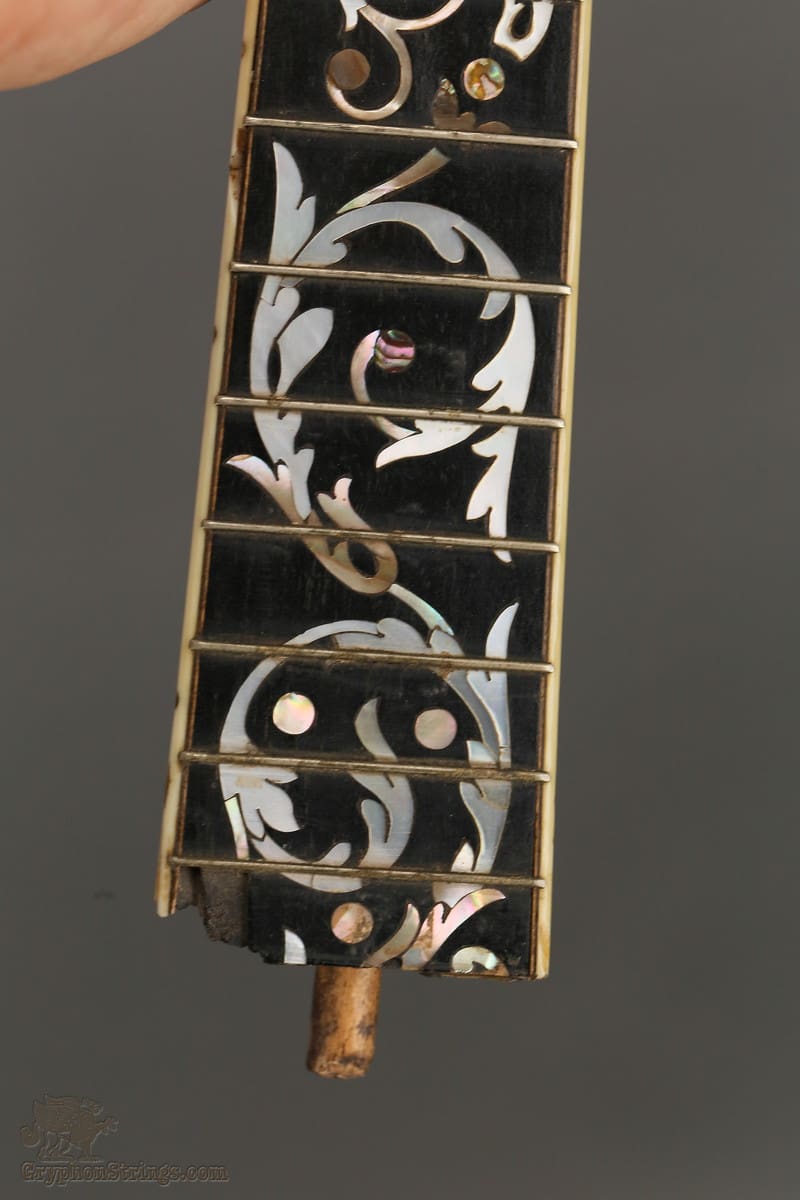
The only bright spot is the headstock. It’s in great condition.

The tuning machines are also in good shape. The engraving on the cover plate is just exquisite. So, what to do about this mandolin? To start with, it’s a rare instrument. Martin introduced it in 1898 and in 1901 they simplified the design by dropping the fancy fretboard inlay and going to a plainer Style 45 diamonds. All told, only about 75 Style 5 mandolins were made in this configuration. On the other hand, it’s a bowl-back mandolin, and while it is an excellent example of the style, there just aren’t very many players who want them. If you want a great bowl back in great condition, there are lots to choose from out there. The starting bid on this one is $500, which I suspect is the value of the tuning machines by themselves. This mandolin would be a supreme test of a repair person’s skills. It’s absolutely worth restoring but it will take a very skilled craftsperson to do the work. Are you up to the challenge?
The bidding on this mandolin is at $500 as of this writing and the auction ends on May 18. Click here for the original listing.
